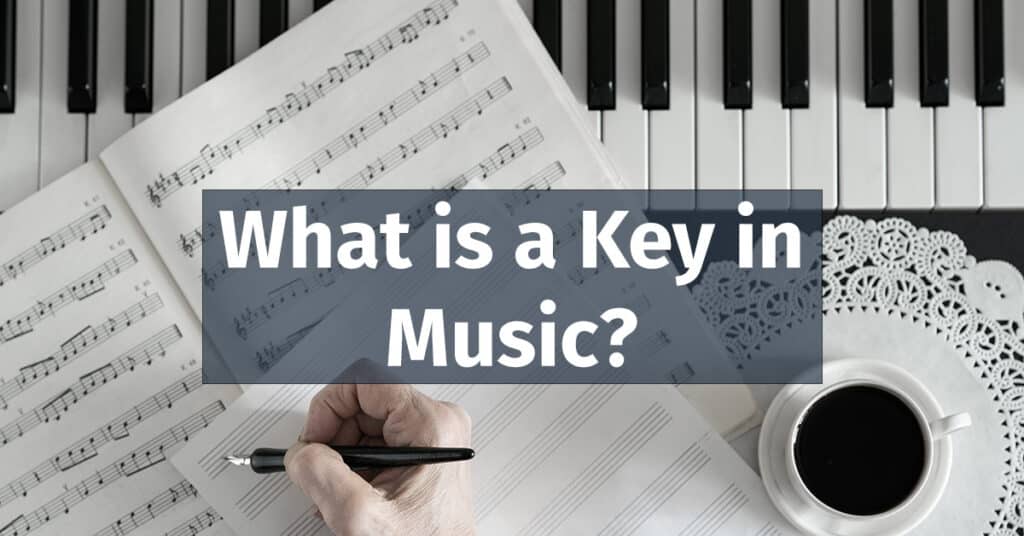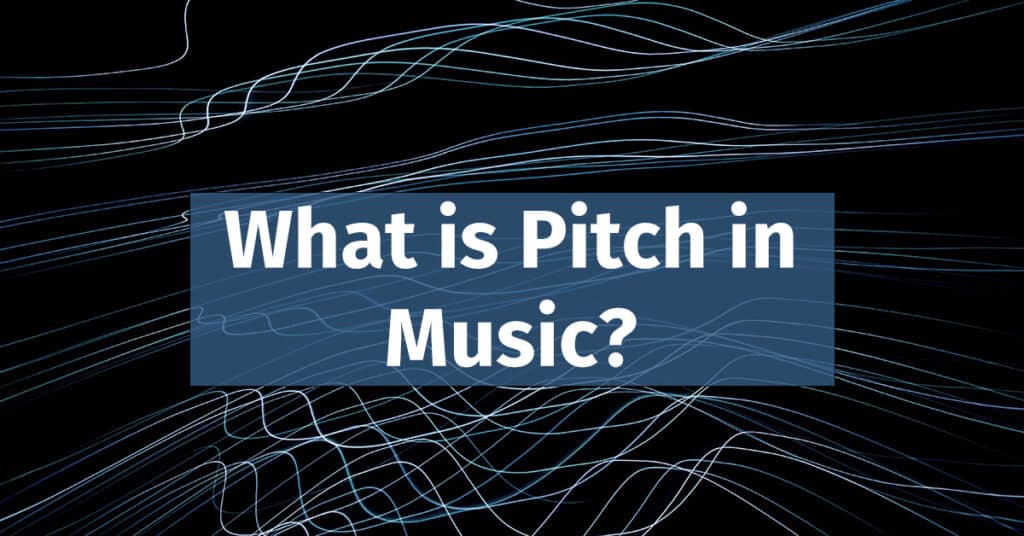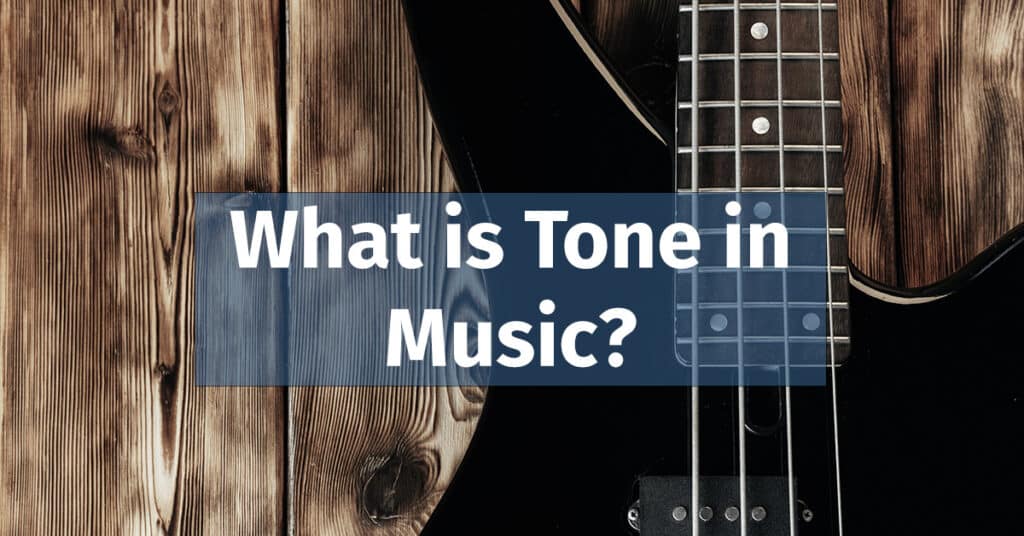A key in music refers to a group of specific pitches, or scale, that forms the foundation of a composition. It sets the tonal center and governs the harmonic progression of the piece.
Introduction
Welcome to another exploration of music theory. Today, we will focus on “keys” in music, an essential part of understanding and creating compositions.
If you’ve encountered phrases such as “this piece is in the key of G minor” and asked yourself, “What is a key in music?” this article aims to provide that clarity.
A musical key serves as a structural guide for a composition, indicating the primary notes and chords around which a piece is built. It also suggests a “home base,” or tonal center with which a piece typically begins and ends.
While it is possible to appreciate music without knowing about keys, understanding this element can significantly enhance one’s musical comprehension and creation capabilities.
This article aims to explain what a musical key is and how it functions. We will differentiate between major and minor keys, explain the concept of tonality in relation to musical keys, and explore the process of modulation, which involves shifting keys within a composition.
We will also briefly overview the subject of key signatures, which will be explored in depth in a future article. Furthermore, we will discuss how the choice of a key can shape the mood and character of a piece.

The Basics of Musical Keys
A key in music is a fundamental concept that guides the structure and organization of a musical piece. It provides a framework within which the piece operates, determining the set of pitches or notes the composition predominantly uses.
Understanding a key in music is similar to understanding a map for a journey. Just as a map outlines the path you’ll follow and the landmarks you’ll encounter along the way, a key in music defines the notes and chords that will be most frequently used and provides a sense of direction and resolution to a piece.
So why is understanding keys so important? Primarily, music keys affect a piece’s mood, resonance, and harmony. They give songs their distinctive feel and can subtly influence how listeners react to the music emotionally.
For songwriters and composers, knowing about musical keys is vital. They need to choose a key that not only suits the mood and message of the song but also fits the range of the singer or the instruments being used. The Circle of Fifths is a valuable tool for understanding the relationship between different keys in music.
This section will explore the fundamental aspects of musical keys, how they relate to scales and intervals, and why they are pivotal in music composition and songwriting. Let’s delve into these basic principles.
What Does “In Key” Mean?
When we describe a song as “in key,” it means that most of its pitches align with a specific musical scale. In essence, the “key” of a song determines its tonal center or the “home base” for the notes and chords used in the piece.
For example, if a song is said to be in the key of C major, most (if not all) of its notes can be found in the C major scale. This implies that the song likely starts and ends on a C, and the harmonies within the song primarily use the chords that can be built from notes in the C major scale.
However, it’s essential to note that composers can sometimes use notes outside the designated key for added interest or specific emotional effects. These are often termed “accidental” notes and are considered exceptions to the rule rather than changing the overall key of the song.
In a broader sense, understanding the key of a song helps musicians and listeners predict and understand the structure and progression of the music.
Tonality and Tonic
At the heart of understanding musical keys is tonality, which describes the hierarchical relationship between the pitches in a key. Within this hierarchy, one note assumes a place of primary importance: the tonic.
The tonic is the first note of any scale, serving as the tonal center or “home base” of a piece of music written in a particular key. It is the note where music in a certain key feels “at home.” This is the note that the melody and harmony are usually drawn towards and often return to for a sense of closure or resolution. For instance, the note G would serve as the tonic in a piece in the key of G major.
When music returns to the tonic, it gives a sense of resolution or completion, as though the journey outlined by the key has come full circle. This resolution is often achieved through a progression of chords, culminating in a cadence that leads back to the tonic.
Major and Minor Keys
Within the framework of Western music theory, two basic types of keys serve as the foundation for most musical compositions: major and minor. These musical keys, each with distinct characteristics, set the tonal landscape of a piece and significantly influence its emotional impact.

The unique emotional qualities of major and minor keys stem largely from their distinct sequences of whole (W) and half (h) steps.
It’s worth noting that modes, which we’ve explored in another article, also play a role in determining the character of a composition, but for now, we’ll focus on major and minor keys.
Understanding Major Keys
A major key is founded on a major scale, a series of seven distinct pitches, including whole and half steps, with a specific pattern that starts and ends on the tonic note. This tonic, or the “home” note, is the basis of the key and gives it its name. For instance, a piece of music based on the C Major scale is said to be in the key of C Major.
Major keys are characterized by a sound often perceived as bright, joyous, or triumphant due to the specific pattern of intervals between the notes on a major scale. The Major Third interval, the distance between the first (tonic) and third note of the major scale, is particularly significant and contributes greatly to this uplifting effect.
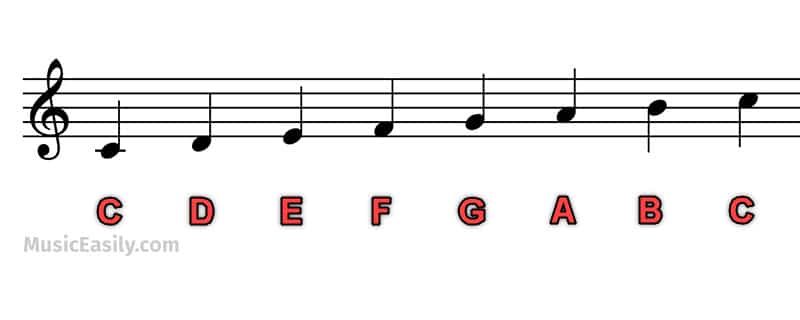
Understanding major keys is critical to music theory, as they underpin countless pieces of music across various genres. For a deeper exploration of the scales that constitute these keys, refer to our article “What is a Musical Scale?“.
Understanding Minor Keys
In contrast to major keys, minor keys are based on minor scales, which contain a different pattern of intervals. The third note of a minor scale is a half-step lower than that of a major scale, creating a minor third interval from the tonic. This interval gives minor keys their distinctive sound, often perceived as sad or reflective.
Like major keys, the name of a minor key corresponds to its tonic note. So, a piece based on the A Minor scale is in the key of A Minor.
With their unique emotional resonance, minor keys offer a rich palette for expressing a different set of moods in music composition.
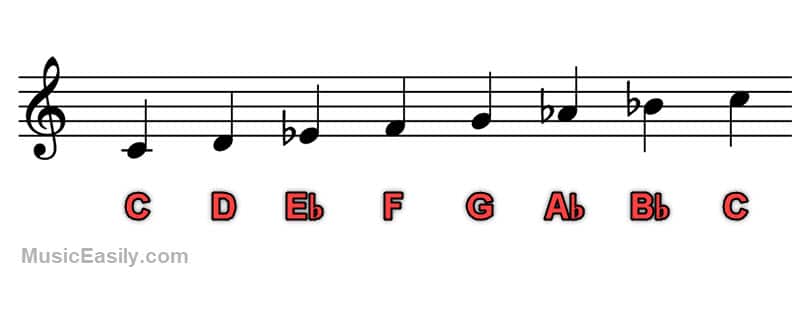
This ability to evoke a broad spectrum of emotions underscores the importance of understanding major and minor keys in music theory.
Key and Tonality
In music theory, “key” and “tonality” are often used interchangeably, but they do not exactly mean the same thing. It’s crucial to fully grasp the nuanced relationship between these two concepts to appreciate music’s structural depth and emotional expressiveness.
What is Tonality?
At its most fundamental level, tonality organizes pitches and harmonies around a central note known as the “tonic.” This system, the cornerstone of Western music for centuries, gives music its sense of direction and resolution.
The tonal center, or tonic, acts as a point of stability and rest towards which all other elements of the piece are oriented. All notes and chords inherently gravitate towards the tonic in a tonal piece of music. This gravitational pull creates tension and release within music, driving the narrative flow of a composition.
Relationship Between Key and Tonality
A “key,” on the other hand, is a specific instantiation of tonality. It defines the tonic note and the set of pitches, whether in a major or minor scale, that form a piece’s harmonic and melodic vocabulary. When we say a piece is in the key of C Major, for instance, we’re saying that the music is organized around the tonal center of C, using the pitches of the C Major scale.
In other words, tonality is the broader concept that describes a musical system in which pitches are related to a central tonic. Meanwhile, a musical key is the application of this concept with a specific tonic and set of intervals (major or minor).
Understanding the relationship between key and tonality can enhance your ability to interpret and compose music. It sheds light on the structure and harmonic progressions within a piece and highlights how composers use musical keys to convey different emotions and narratives.
In the end, the interplay of keys within the tonality framework forms one of music’s most essential and expressive aspects.
Modulation: Changing Keys in a Song
Modulation is a significant aspect of music theory that involves transitioning from one key to another within a piece of music. It is a creative tool that composers and songwriters use to add contrast, drama, and narrative progression to a piece.
By skillfully navigating between different musical keys, it’s possible to guide the emotional journey of a composition, creating moments of tension, surprise, or resolution (ext. link) that captivate the listener.
Types of Modulation
There are several types of modulation, each with its unique characteristics and uses. Here, we will examine direct, pivot chord, and Common-Tone Modulation.
Direct Modulation
Also known as abrupt or phrase modulation, direct modulation occurs when a piece shifts from one musical key to another without transitional chords or common tones. It can often result in a surprising or dramatic change in the music’s mood.
This modulation type is frequently used in pop and rock music to raise the energy level, often before a final chorus.
Pivot Chord Modulation
Pivot chord modulation, or common chord modulation, is a more subtle technique. It involves using a chord that is common to both the original key and the destination key, serving as a “pivot” between the two.
This shared chord smooths the transition, creating a sense of continuity even as the key changes. It’s a widely used form of modulation in various genres, as it can seamlessly weave together different musical sections.
Common-Tone Modulation
Common-tone modulation represents a smooth, often subtle transition from one key to another, using a sustained or repeated note that is present in both keys. This common tone serves as a musical bridge, easing the shift and helping the listener’s ear to accept the new key.
To illustrate, imagine you’re writing a piece in C Major and want to transition to G Major. You might emphasize the note G, common to both keys, and then proceed to the new key.
For instance, you might have a melody that ends on a G note in the key of C Major and then introduce a chord progression that interprets that G note as part of the key of G Major.
Common-tone modulations are particularly effective when the two keys are closely related, but this technique can also be used to move between more distantly related keys. Understanding this form of modulation can greatly expand your creative options in songwriting and composition.
Mastering modulation can open up vast new possibilities in your composition and songwriting. Understanding how to transition smoothly between keys enables you to craft more varied, emotionally engaging music.
Key Signatures: A Brief Overview
In music, a key signature is an element that provides essential information about the piece you’re about to play or analyze.
A key signature is a visual tool that indicates which pitches are to be played as sharps or flats throughout the piece. It is situated at the beginning of a piece of sheet music, right after the clef symbol. Understanding a key signature allows you to anticipate the tonality of a piece, whether it’s based on a major or minor key.
The key signature is formed by using a series of “accidentals” – sharps (#) or flats (♭). For instance, if you see a key signature with one sharp, you’re looking at either G Major or E minor. If you encounter two flats, it’s either B♭ Major or G minor.
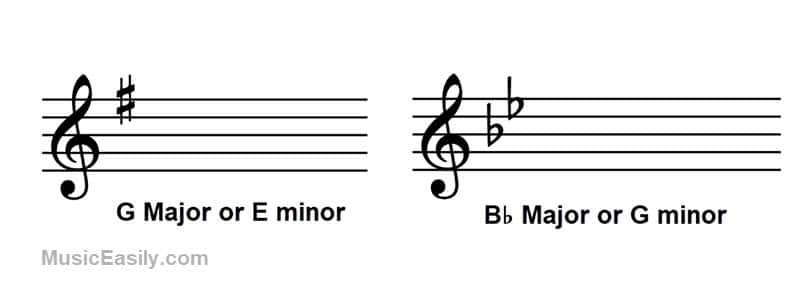
The relationship between sharps, flats, and their corresponding keys is something musicians often memorize but can also be understood through patterns and practice.
Key signatures serve a critical function: they streamline notation. Without them, each sharp or flat would have to be written next to each note, making the sheet music visually cluttered and more challenging to read.
Recognizing and understanding key signatures is an essential part of music literacy. It enables musicians to comprehend the underlying harmonic structure of a piece of music, improving both performance and compositional skills.
To delve further into the world of key signatures and to get a more detailed understanding of how they work, the types of key signatures, and their implications in music, check out our comprehensive article on key signatures.
That article provides a more in-depth look at this fundamental aspect of music theory, helping to reinforce your knowledge and improve your musical proficiency.
The Effect on a Piece of Music
The choice of key in music is far more than a technical consideration—it profoundly shapes the mood, tone, and character of a piece of music. Whether a song is penned in a major or minor key is often the first indicator of its emotional resonance.
Major keys are frequently associated with bright, cheerful, or triumphant emotions. On the other hand, minor keys tend to express darker, sad, or reflective feelings.
However, this is not a rigid rule. The expressive power of a key in music can be subjective and dependent on other musical factors such as tempo, instrumentation, and lyrical content.
Some composers and songwriters also employ “modal mixture” or “borrowed chords,” using chords from a musical key’s major and minor counterparts to create complex emotional landscapes within a piece.
Moreover, the choice of key can influence a song’s sonic characteristics, especially in vocal music. Each singer has a unique range, and the key can drastically affect the ease of singing and the timbre of the voice. For instance, a song set in a lower key might give a warm, intimate feeling, while a higher key might evoke a sense of urgency or excitement.
Lastly, different musical keys can also have unique physical characteristics on some instruments. For example, open strings resonate differently on stringed instruments than fingered notes, affecting the overall tone color.
Exploring key choices offers songwriters and composers an incredibly potent tool for expressing emotion and creating varied sonic landscapes. Therefore, understanding the potential emotional and sonic implications of different keys in music is crucial to the creation process.
Conclusion
Understanding keys is crucial in music, setting the tonal structure of compositions and influencing their emotional resonance. They form the basis of a song in classical, Western music, with major and minor keys carrying distinctive characteristics.
Modulation, the process of shifting from one key to another within a piece, adds dynamism and enhances the narrative arc of the composition. Furthermore, key signatures, a notation tool denoting the key of a piece, play a crucial role in music theory.
The choice of key directly impacts a piece’s overall tone and character, akin to an artist choosing a color palette. Understanding musical keys enables a deeper comprehension of music and fosters enhanced control over the emotional landscape of your compositions.
While music theory can be complex, every new concept adds to your musician’s toolbox, enriching your journey in this universal language. The key (pun intended) is continuous learning, experimenting, and application.
